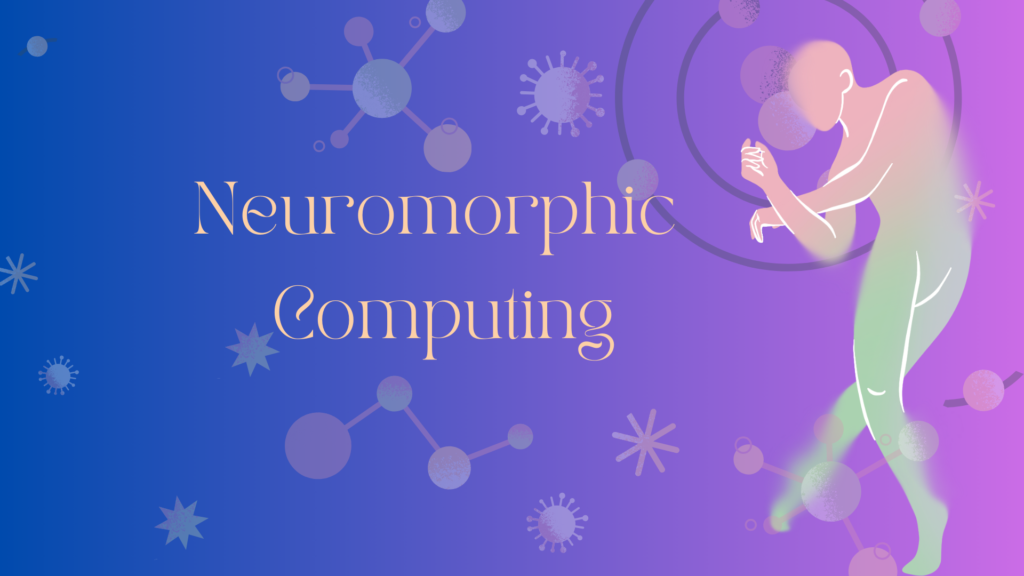Revolutionizing the Future of AI and Technology
In the world of computing, the limits of traditional architectures are becoming increasingly apparent as we push the boundaries of artificial intelligence (AI), machine learning (ML), and other advanced technologies. Enter neuromorphic computing, a cutting-edge field designed to mimic the human brain’s biological processes to overcome these limitations. Neuromorphic computing integrates the principles of neuroscience with computer science to create a system that is efficient, scalable, and capable of processing complex information in a more human-like way.
Traditional computing systems, based on the Von Neumann architecture, separate memory from processing units, which leads to bottlenecks when performing tasks requiring massive data transfer between the two. Neuromorphic computing, in contrast, aims to bridge this gap by mimicking the brain’s neural architecture, where neurons and synapses work together seamlessly to process and store information simultaneously. This parallel processing allows neuromorphic systems to operate with significantly greater speed and efficiency, particularly when handling tasks such as pattern recognition, sensory processing, and decision-making.
Table of Contents
Revolutionizing the Future of AI and Technology.
The Foundations of Neuromorphic Computing.
Architecture of Neuromorphic Systems.
Neuromorphic Computing vs. Traditional Computing.
Applications of Neuromorphic Computing.
Top 20 FAQ’s on Neuromorphic Computing.
The significance of neuromorphic computing extends beyond just AI. It promises to revolutionize fields such as robotics, autonomous vehicles, medical diagnostics, and even finance. For instance, with the integration of neuromorphic chips, robots and autonomous systems could react in real-time to complex sensory inputs, much like humans do. The applications are as diverse as they are transformative.
Moreover, energy efficiency is a significant challenge in current AI systems. Neuromorphic computing offers a more sustainable solution, operating with considerably lower power requirements. This is crucial, given the rising demand for AI-driven applications across industries, which currently consume vast amounts of energy.
This article delves deeper into the various aspects of neuromorphic computing, exploring its underlying principles, the current state of research, real-world applications, and its future potential. By understanding this emerging technology, we can better appreciate the profound impact it will have on our everyday lives and the technological landscape.
The Foundations of Neuromorphic Computing
Neuromorphic computing refers to a branch of computer engineering that seeks to emulate the structure and function of the human brain. This involves designing hardware, specifically integrated circuits (ICs) and systems, that can simulate neurons and synapses, enabling more efficient data processing and decision-making. The core of neuromorphic systems is rooted in the principles of brain functionality, including:
- Parallel Processing: The brain processes information through interconnected neurons in a massively parallel manner, unlike traditional computers which follow a sequential approach.
- Event-Driven Processing: In contrast to traditional systems that process tasks on a clock cycle basis, neuromorphic systems process data as events occur. This event-driven model reduces idle time and energy consumption.
- Plasticity: In the human brain, synaptic connections strengthen or weaken over time in response to stimuli, a phenomenon known as synaptic plasticity. Neuromorphic systems aim to incorporate this self-adaptive ability into computing, enabling machines to learn and improve over time without predefined algorithms.
History and Development
Neuromorphic computing was first conceptualized by Carver Mead in the 1980s, an American scientist who pioneered the idea of analog circuits that could emulate the biological neural structures found in the brain. While the initial research was primarily academic, focusing on understanding biological systems, the growing demands of AI, ML, and cognitive computing have brought neuromorphic computing into the spotlight in recent years.
Advances in neuroscience, combined with progress in semiconductor technologies, have catalyzed the development of neuromorphic chips. Companies like IBM, Intel, and BrainChip are at the forefront, investing heavily in the development of neuromorphic processors that mimic synaptic activity to create more brain-like systems.
Architecture of Neuromorphic Systems
Neuromorphic Hardware – The Core Components
At the heart of neuromorphic computing is hardware that mimics neurons and synapses. Neuromorphic systems typically employ three key components:
- Artificial Neurons: Neuromorphic systems use artificial neurons, or nodes, designed to emulate the electrical properties of biological neurons. These artificial neurons transmit signals in a manner that mirrors the firing of real neurons.
- Synapses: Synapses in the human brain facilitate communication between neurons. In a neuromorphic system, synaptic connections are mirrored through programmable elements that can adjust the strength of the connection based on the data being processed, akin to the brain’s plasticity.
- Memristors: These are a type of non-volatile memory device that can store information as resistance levels. Memristors are ideal for neuromorphic computing because they can be used to replicate synaptic weights and allow for energy-efficient data storage and processing.
Neuromorphic Chips
A number of neuromorphic chips have emerged in recent years that bring these architectural components to life. Leading examples include:
- IBM TrueNorth: One of the earliest neuromorphic processors, TrueNorth, simulates one million neurons and 256 million synapses while consuming far less energy than traditional chips. TrueNorth is optimized for tasks such as image recognition, speech processing, and autonomous systems.
- Intel Loihi: Loihi is another neuromorphic chip that focuses on self-learning capabilities, meaning it can adapt its behavior based on the data it receives. Loihi has 128 cores, 130,000 neurons, and 130 million synapses, offering significant advancements in pattern recognition, robotic systems, and anomaly detection.
- BrainChip Akida: Akida is a commercial neuromorphic processor with a focus on low-power applications such as edge computing. Its architecture is optimized for continuous learning and on-chip processing, making it ideal for real-time AI workloads in mobile and embedded systems.
Neuromorphic Computing vs. Traditional Computing
Von Neumann Bottleneck
Traditional computing is based on the Von Neumann architecture, where the memory and processor are separate entities, connected by a data bus. This design leads to a bottleneck, as the processor has to wait for data transfer between the memory and itself. In large-scale AI tasks, such as training neural networks, this back-and-forth causes latency and consumes a significant amount of power.

Neuromorphic computing, on the other hand, doesn’t suffer from this bottleneck. In a neuromorphic system, memory and processing are integrated within the same unit, just like neurons in the brain that both process and store information. This enables high-speed, low-energy processing, especially in tasks that involve large volumes of data, like image and speech recognition.
Parallelism and Energy Efficiency
A key advantage of neuromorphic systems over traditional systems is their parallel processing capability. Neuromorphic systems can process multiple tasks simultaneously, while traditional systems are typically constrained to sequential processing. Moreover, neuromorphic architectures are far more energy-efficient. By mimicking the low-energy operations of the human brain, they can process complex AI tasks while consuming a fraction of the power of traditional architectures.
This efficiency makes neuromorphic computing ideal for edge devices, such as IoT (Internet of Things) sensors and mobile devices, where power resources are limited but high processing capabilities are needed.
Applications of Neuromorphic Computing
Artificial Intelligence and Machine Learning
Neuromorphic computing has vast potential in advancing AI and ML. The ability to process information in real-time and to learn from experience, as the brain does, can significantly enhance AI models. Neuromorphic systems can improve tasks such as:
- Pattern Recognition: Neuromorphic chips excel at recognizing patterns in data, whether it’s visual, auditory, or sensory input. This has significant implications for AI applications in areas like autonomous driving, facial recognition, and natural language processing.
- Self-Learning Systems: One of the most exciting aspects of neuromorphic computing is its ability to learn autonomously without predefined algorithms. For instance, Intel’s Loihi chip can learn from real-world inputs and adapt its responses in real-time, opening the door to AI systems that can operate in dynamic and unpredictable environments.
Robotics and Autonomous Systems
Neuromorphic computing can revolutionize the field of robotics, particularly in the development of autonomous robots and vehicles. These systems require real-time data processing to navigate and respond to their environment, and neuromorphic systems offer the low-latency, high-efficiency processing necessary for this.
For example, a neuromorphic chip in an autonomous vehicle can rapidly process visual data from cameras, auditory inputs from microphones, and sensory data from radar, enabling the vehicle to make quick decisions and navigate complex environments.
Healthcare and Neuromorphic Prosthetics
Neuromorphic computing can also play a transformative role in healthcare, particularly in developing more advanced prosthetics and brain-computer interfaces (BCIs). By mimicking the neural pathways of the brain, neuromorphic systems can be used to create prosthetics that respond more intuitively to neural signals, allowing patients to control artificial limbs with greater precision and fluidity.
Furthermore, neuromorphic chips can be used in BCIs, allowing for more seamless interaction between the human brain and machines. This has potential applications in treating neurological conditions, restoring lost sensory functions, and even enhancing cognitive abilities.
Edge Computing and IoT
Edge computing involves processing data near the data source, such as in IoT devices, to reduce latency and bandwidth. Neuromorphic chips are particularly well-suited for edge computing, as they offer high processing power and low energy consumption. With the increasing proliferation of IoT devices, neuromorphic computing could enable more advanced AI applications at the edge, from smart home systems to industrial automation.
Challenges and Limitations
Hardware Complexity
While the potential of neuromorphic computing is enormous, its development faces significant challenges. One major challenge is the complexity of designing neuromorphic hardware that can accurately emulate the brain’s functions. Building chips that integrate memory and processing while maintaining low energy consumption requires overcoming substantial engineering hurdles.

Limited Software Ecosystem
Another major limitation is the lack of a robust software ecosystem for neuromorphic hardware. Traditional software models and programming languages are designed for Von Neumann architectures, and there is a shortage of tools and frameworks optimized for neuromorphic systems. Developing software that fully exploits the advantages of neuromorphic hardware remains a key challenge for researchers and developers.
Scalability
Although neuromorphic chips have made significant strides, scaling them to match the computational power of the human brain, which has approximately 86 billion neurons and trillions of synapses, remains a daunting task. While systems like IBM’s TrueNorth and Intel’s Loihi have shown promising results, creating neuromorphic chips that can scale to the level required for advanced AI tasks, such as general intelligence, will require further breakthroughs.
Future Outlook and Potential
Despite these challenges, the future of neuromorphic computing looks incredibly promising. As AI applications continue to grow in complexity and scope, the need for efficient, scalable, and adaptive computing architectures will only increase. Neuromorphic computing offers a pathway to achieving the next generation of AI, one that is more closely aligned with the workings of the human brain.
In the coming years, we can expect neuromorphic chips to play an increasingly important role in AI, robotics, healthcare, and IoT. Research into improving the scalability, power efficiency, and programmability of these systems will likely drive rapid advancements, making neuromorphic computing a cornerstone of future technologies.
Top 20 FAQ’s on Neuromorphic Computing
These FAQs provide a comprehensive understanding of neuromorphic computing, its applications, and its future potential.Here are the Top 20 FAQs on Neuromorphic Computing
1. What is neuromorphic computing?
Neuromorphic computing is a field of computer engineering that aims to emulate the structure and functioning of the human brain. It focuses on designing hardware systems, such as chips, that mimic neurons and synapses, enabling efficient, parallel processing and decision-making in a manner similar to biological brains.
2. How does neuromorphic computing differ from traditional computing?
Traditional computing is based on the Von Neumann architecture, where memory and processing units are separate, leading to bottlenecks in data transfer. In contrast, neuromorphic computing integrates memory and processing, just like neurons in the brain, allowing for faster, parallel data processing and energy efficiency.
3. What are the primary components of a neuromorphic system?
Neuromorphic systems are typically made up of:
- Artificial Neurons: Nodes that mimic the electrical properties of biological neurons.
- Synapses: Components that connect neurons and modulate signal strength, simulating synaptic plasticity.
- Memristors: Memory devices used to replicate synaptic weights and store data.
4. What are neuromorphic chips?
Neuromorphic chips are specialized processors designed to simulate neural activity. They can process data efficiently and in parallel, much like the brain. Examples include IBM’s TrueNorth, Intel’s Loihi, and BrainChip’s Akida.
5. What are the advantages of neuromorphic computing?
Neuromorphic computing offers several advantages, including:
- Energy efficiency: It consumes significantly less power than traditional systems.
- Real-time processing: Capable of handling complex data, like sensory inputs, in real-time.
- Parallelism: Multiple tasks can be processed simultaneously, improving overall performance.
6. What are the real-world applications of neuromorphic computing?
Neuromorphic computing has applications in various fields, such as:
- Artificial intelligence (AI) and machine learning (ML)
- Robotics and autonomous vehicles
- Healthcare, such as neuromorphic prosthetics and brain-computer interfaces
- Edge computing and IoT, enabling smarter, more energy-efficient devices
7. What is the Von Neumann bottleneck, and how does neuromorphic computing solve it?
The Von Neumann bottleneck refers to the limitation in traditional computing where memory and processors are separate, leading to slow data transfer and processing delays. Neuromorphic computing solves this by integrating memory and processing units, allowing for simultaneous data storage and processing, which eliminates the bottleneck and increases efficiency.

8. How does neuromorphic computing contribute to energy efficiency?
Neuromorphic systems mimic the brain’s way of processing information, which is inherently energy-efficient. By processing data in parallel and using event-driven models (processing data only when an event occurs), neuromorphic chips drastically reduce power consumption compared to traditional processors.
9. How does neuromorphic computing improve AI and machine learning?
Neuromorphic chips are designed to handle complex tasks like pattern recognition, sensory processing, and real-time decision-making. They can self-learn, adapt to new information, and process data in a human-like way, which makes AI models more efficient, adaptable, and capable of learning from unstructured data without predefined algorithms.
10. What are neuromorphic prosthetics, and how do they work?
Neuromorphic prosthetics use neuromorphic chips to simulate neural pathways in the brain, allowing more intuitive control of artificial limbs. By processing neural signals more naturally, these prosthetics can respond to user inputs more quickly and with greater precision, offering improved mobility for patients.
11. Can neuromorphic computing be scaled to match the human brain’s power?
While current neuromorphic systems like IBM’s TrueNorth and Intel’s Loihi show promise, scaling them to the level of the human brain, which has around 86 billion neurons and trillions of synapses, remains a challenge. Continued advances in chip design, materials, and engineering will be necessary to achieve this scale.
12. How is neuromorphic computing used in autonomous systems?
In autonomous systems like self-driving cars or robots, neuromorphic computing enables real-time processing of sensory data, such as visual and auditory inputs, allowing the system to make decisions and react instantly. This can improve navigation, object recognition, and environmental interaction.
13. What are memristors, and what role do they play in neuromorphic systems?
Memristors are a type of memory device that can store information as resistance levels. They play a critical role in neuromorphic computing by replicating synaptic weights and enabling efficient data storage and processing. Memristors make neuromorphic systems more energy-efficient and capable of learning from experience.
14. What are the main challenges in developing neuromorphic computing systems?
Key challenges include:
- Hardware complexity: Designing neuromorphic hardware that emulates brain-like functions is highly complex.
- Scalability: Scaling neuromorphic chips to the level required for advanced AI tasks is difficult.
- Software limitations: There’s a lack of robust software ecosystems to support neuromorphic hardware.
15. How does neuromorphic computing handle pattern recognition tasks?
Neuromorphic systems are particularly adept at recognizing patterns due to their parallel processing architecture and event-driven operations. This makes them ideal for tasks like image recognition, speech processing, and anomaly detection in AI applications.
16. What are the main neuromorphic chips currently in use?
Prominent neuromorphic chips include:
- IBM’s TrueNorth: Focuses on tasks like image recognition and sensory processing.
- Intel’s Loihi: Known for its self-learning capabilities and use in pattern recognition and anomaly detection.
- BrainChip’s Akida: Designed for edge computing applications with a focus on energy efficiency and continuous learning.
17. How does neuromorphic computing support edge computing?
Neuromorphic computing is well-suited for edge computing because it processes data locally at the source (like sensors or IoT devices) with minimal power consumption. This allows for real-time data processing and decision-making without relying on cloud-based systems, reducing latency and improving efficiency.
18. Can neuromorphic computing improve cybersecurity?
Yes, neuromorphic computing can enhance cybersecurity by enabling more efficient real-time anomaly detection, which can be applied to identify unusual patterns or threats in data streams. Neuromorphic chips, like Intel’s Loihi, have been used in applications for detecting cybersecurity anomalies at faster speeds than traditional systems.
19. What industries are expected to benefit the most from neuromorphic computing?
Neuromorphic computing can transform several industries, including:
- Healthcare: With applications in medical diagnostics, neuromorphic prosthetics, and brain-computer interfaces.
- Autonomous systems: In self-driving vehicles and robots.
- Artificial intelligence: For improving real-time data processing and learning in AI systems.
- IoT and edge computing: Enabling smart, energy-efficient devices in homes, cities, and industries.
20. What is the future potential of neuromorphic computing?
Neuromorphic computing has the potential to revolutionize how we approach AI, machine learning, robotics, and healthcare. As hardware designs improve and software ecosystems mature, we could see neuromorphic systems enabling machines to think, learn, and process information more like humans. This will unlock new possibilities in everything from autonomous technology to personalized healthcare and environmental sensing.
Conclusion
Neuromorphic computing represents a significant leap forward in the quest to build more efficient, adaptable, and intelligent computing systems. By mimicking the neural structure of the human brain, neuromorphic systems can process information in real-time, learn from their environment, and operate with unparalleled energy efficiency. As AI continues to permeate various industries, neuromorphic computing will be instrumental in meeting the demands of increasingly complex and data-intensive tasks.
Though challenges remain, particularly in scaling hardware and developing the necessary software ecosystems, the potential benefits of neuromorphic computing far outweigh these obstacles. As research and development continue, neuromorphic computing is poised to become a key technology driving the next wave of innovation across diverse fields, from robotics to healthcare to artificial intelligence. It is not only a technological breakthrough but also a crucial step toward building machines that think and learn like humans.
Curated reads





